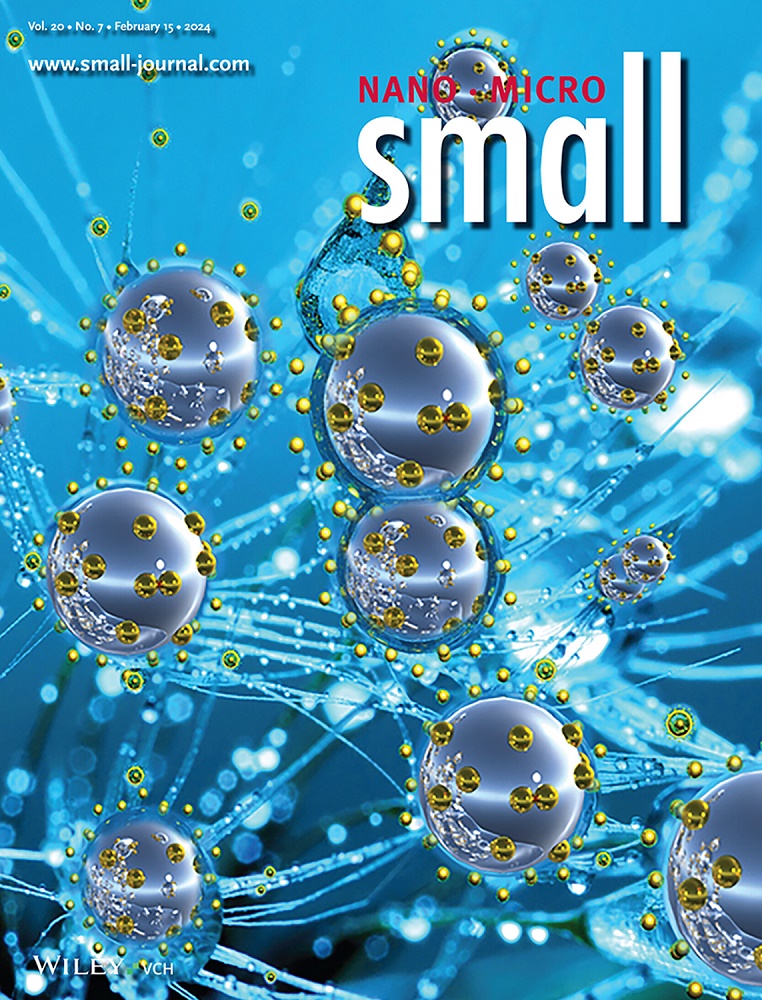Suppressing Phase Instability and Iodide Expulsion in Mixed-Halide Perovskites via Directed Hole Transfer and Defect Management.
IF 12.1
2区 材料科学
Q1 CHEMISTRY, MULTIDISCIPLINARY
引用次数: 0
Abstract
Bandgap tunability in mixed-halide perovskite CsPb(BrxI1-x)3 nanocrystals (NCs) makes them appealing for multijunction solar cells and tunable optoelectronics. However, light-induced halide migration and phase segregation, primarily driven by hole trapping and surface defects, limit their practical utility. Holes oxidize iodide ions, while defects facilitate their diffusion, leading to phase segregation and iodide expulsion. This work addresses these issues through a dual strategy: directional hole extraction and robust defect passivation. Hole-accepting moieties such as ferrocene carboxylic acid (FcA) and (dimethylaminomethyl)ferrocene (FcAm) act as guided sinks for photogenerated holes, preventing their interaction with iodide and thus suppressing iodide expulsion and enhancing photostability. Additionally, dual defect passivation using a zwitterionic mixture of oleic acid (OA) and oleylamine (OAm) reduces light-induced spectral shifts by mitigating defect-driven halide migration. A bromide-excess treatment employing thionyl bromide-modified CsPbBr3 NCs (CPBSOBr2), followed by FcAm integration, further enhances stability through hydrogen bonding between protonated FcAm and bromide ions, efficiently quenching holes and minimizing iodide loss. This study highlights the pivotal role of surface engineering in stabilizing mixed-halide perovskite NCs under prolonged light exposure. By providing fundamental insights into halide migration and phase segregation mitigation strategies, the design of photostable perovskite materials is advanced for high-performance photovoltaic and optoelectronic applications.通过定向空穴转移和缺陷管理抑制混合卤化物钙钛矿的相不稳定性和碘化物排出。
混合卤化物钙钛矿CsPb(BrxI1-x)3纳米晶体(NCs)的带隙可调性使其在多结太阳能电池和可调谐光电子器件中具有吸引力。然而,主要由空穴捕获和表面缺陷驱动的光诱导卤化物迁移和相偏析限制了它们的实际应用。空穴氧化碘离子,而缺陷促进其扩散,导致相偏析和碘化物排出。这项工作通过双重策略解决了这些问题:定向孔提取和鲁棒缺陷钝化。二茂铁羧酸(FcA)和二甲基二茂铁(FcAm)等接受空穴的基团作为光生成空穴的引导槽,阻止它们与碘化物的相互作用,从而抑制碘化物的排出,增强光稳定性。此外,使用油酸(OA)和油胺(OAm)的两性离子混合物进行双缺陷钝化,通过减轻缺陷驱动的卤化物迁移来减少光诱导的光谱偏移。采用亚硫酰溴修饰的CsPbBr3 NCs (CPBSOBr2)进行溴化物过量处理,然后进行FcAm集成,通过质子化FcAm和溴离子之间的氢键进一步增强稳定性,有效地淬灭空穴并最大限度地减少碘化物损失。该研究强调了表面工程在长时间光照下稳定混合卤化物钙钛矿NCs中的关键作用。通过对卤化物迁移和相偏析缓解策略的基本见解,光稳定钙钛矿材料的设计在高性能光伏和光电子应用中取得了进步。
本文章由计算机程序翻译,如有差异,请以英文原文为准。
求助全文
约1分钟内获得全文
求助全文
来源期刊

Small
工程技术-材料科学:综合
CiteScore
17.70
自引率
3.80%
发文量
1830
审稿时长
2.1 months
期刊介绍:
Small serves as an exceptional platform for both experimental and theoretical studies in fundamental and applied interdisciplinary research at the nano- and microscale. The journal offers a compelling mix of peer-reviewed Research Articles, Reviews, Perspectives, and Comments.
With a remarkable 2022 Journal Impact Factor of 13.3 (Journal Citation Reports from Clarivate Analytics, 2023), Small remains among the top multidisciplinary journals, covering a wide range of topics at the interface of materials science, chemistry, physics, engineering, medicine, and biology.
Small's readership includes biochemists, biologists, biomedical scientists, chemists, engineers, information technologists, materials scientists, physicists, and theoreticians alike.
 求助内容:
求助内容: 应助结果提醒方式:
应助结果提醒方式:


